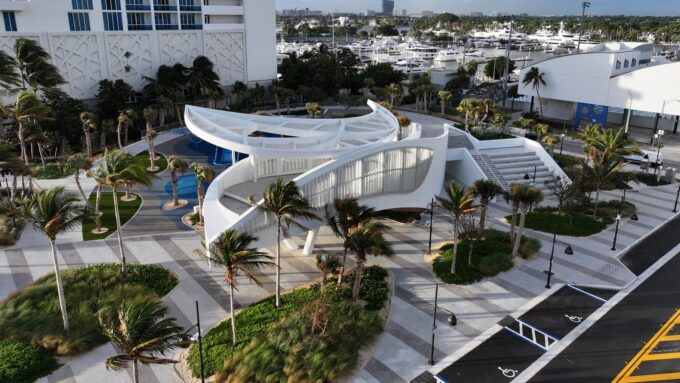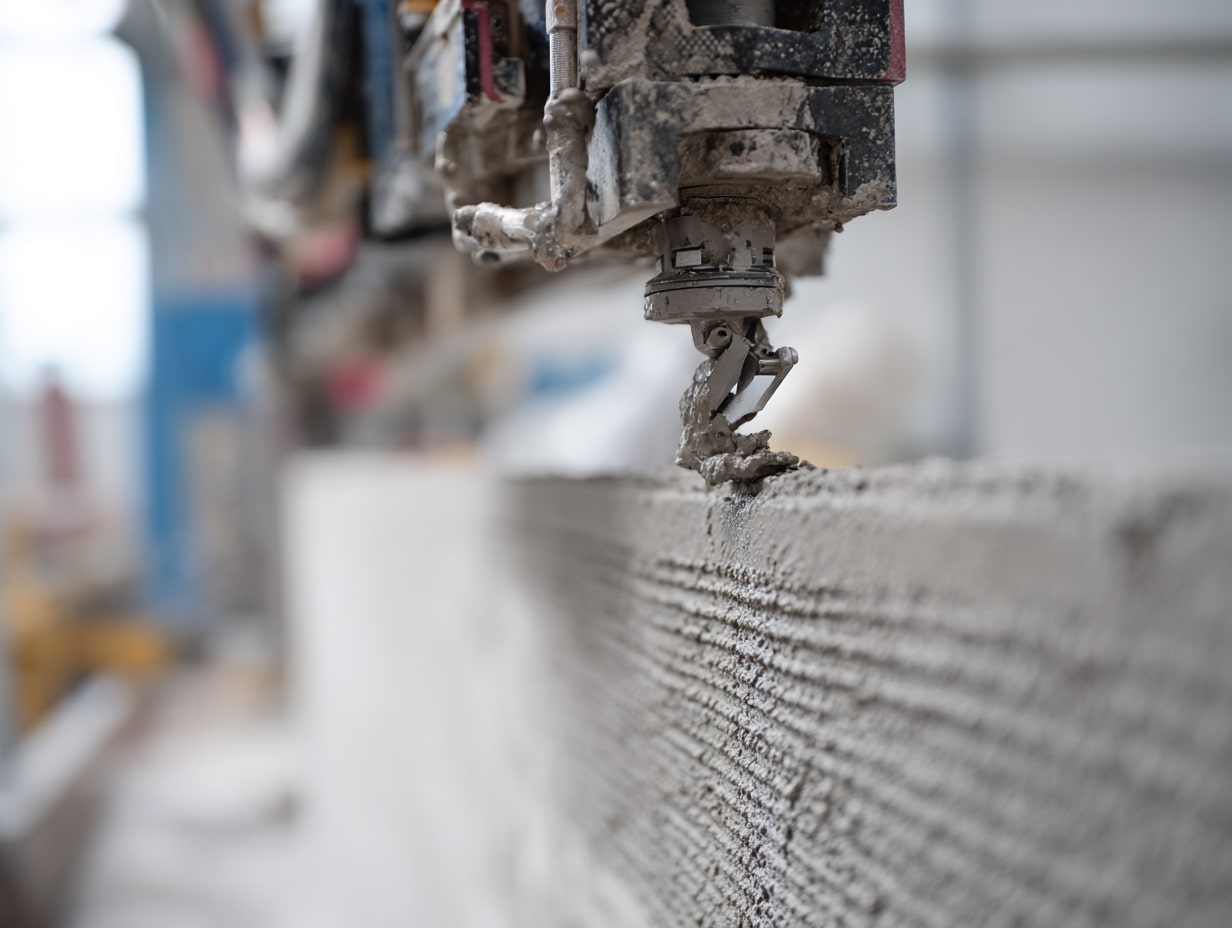- Home
- Articles
- Architectural Portfolio
- Architectral Presentation
- Inspirational Stories
- Architecture News
- Visualization
- BIM Industry
- Facade Design
- Parametric Design
- Career
- Landscape Architecture
- Construction
- Artificial Intelligence
- Sketching
- Design Softwares
- Diagrams
- Writing
- Architectural Tips
- Sustainability
- Courses
- Concept
- Technology
- History & Heritage
- Future of Architecture
- Guides & How-To
- Art & Culture
- Projects
- Interior Design
- Competitions
- Jobs
- Store
- Tools
- More
- Home
- Articles
- Architectural Portfolio
- Architectral Presentation
- Inspirational Stories
- Architecture News
- Visualization
- BIM Industry
- Facade Design
- Parametric Design
- Career
- Landscape Architecture
- Construction
- Artificial Intelligence
- Sketching
- Design Softwares
- Diagrams
- Writing
- Architectural Tips
- Sustainability
- Courses
- Concept
- Technology
- History & Heritage
- Future of Architecture
- Guides & How-To
- Art & Culture
- Projects
- Interior Design
- Competitions
- Jobs
- Store
- Tools
- More
Top Tips for Contemporary Museum Design: Engaging, Sustainable, and Accessible Spaces

Designing a contemporary museum goes beyond creating a space to display artifacts; it’s about crafting an immersive experience that captivates visitors. As technology advances, so do the possibilities for innovative design. From interactive screens to augmented reality, modern museums can offer a dynamic blend of education and entertainment.
We must consider how visitors will interact with the exhibits. Should they be able to touch certain displays, or should artifacts be protected behind glass? Incorporating elements like video screens and augmented reality can breathe life into static objects, making history feel tangible. By leveraging these technological tools, museums can transform into vibrant, engaging spaces that tell compelling stories.

Table of Contents
ToggleUnderstanding Contemporary Museum Design
The Role of Visitor Experience
Visitor experience is central to contemporary museum design. We need to create spaces that engage, educate, and inspire our guests. Incorporating technology like augmented reality and interactive displays can enhance learning and maintain visitor interest. If visitors engage with exhibits without touching them, we can use video screens to share historical context or interesting facts, providing a deeper understanding of the artifacts. Ensuring accessibility and smooth navigation through the museum space is crucial to maintaining a positive visitor experience.
Key Characteristics of Modern Architecture
Modern museum architecture blends aesthetic appeal with functionality. Buildings like the Beijing National Stadium showcase innovative designs that incorporate both traditional elements and modern construction techniques. We often see the use of steel, glass, and open spaces to create inviting and flexible environments. Museums designed with sustainability in mind can utilize natural light and energy-efficient systems. The integration of open layouts permits fluid visitor movement and enhances the overall ambiance.
Spatial Layout
Strategic spatial layout directs visitor flow and maximizes exhibit engagement. We start by identifying focal points and create pathways that guide visitors through a cohesive narrative. Open spaces combined with designated exhibit areas ensure smooth circulation and prevent congestion. Dynamic layouts with multifunctional areas can adapt to different exhibits and events. Using spatial hierarchy helps in prioritizing key exhibits and ensuring a logical progression through the museum.
Exhibit Placement
Effective exhibit placement influences visitor interaction and learning. Placing interactive elements at key points maintains engagement. We must balance static displays with interactive ones to cater to diverse interests. Exhibits should be accessible and visible from multiple angles. Proper spacing between exhibits prevents overcrowding and allows visitors to engage fully with each display. Highlighting significant artifacts in prominent positions draws attention and enhances their impact.
Lighting Techniques
Lighting techniques are pivotal in setting the mood and highlighting exhibits. We should use a mix of natural and artificial lighting to create a balanced atmosphere. Spotlighting key exhibits draws focus and adds drama. Ambient lighting ensures overall visibility and comfort. Consistency in lighting avoids visual fatigue and enhances the overall experience. Integrating adjustable lighting systems allows flexibility for different exhibits and events.
By focusing on these aspects, our contemporary museum designs can offer immersive, educational, and enjoyable experiences for all visitors.

Planning and Conceptualization
Establishing a Vision and Mission
Setting a clear vision and mission is fundamental for contemporary museum design. This vision outlines the museum’s core purpose, its target audience, and its educational goals. A well-defined mission helps clarify the type of exhibits that align with the museum’s identity, guiding design and curation decisions. Understanding whether the focus is on art, history, science, or a mix allows designers to create spaces that support and enhance the overall objectives.
Integrating Local Culture and Context
Incorporating local culture and context enriches the museum experience. Recognizing and reflecting the unique aspects of the surrounding community fosters a deeper connection among visitors. Integrating local materials, architectural styles, and historical references ensures that the museum resonates with the community it serves. This consideration not only augments visitor engagement but also respects and honors the cultural heritage of the area.
Architectural Elements in Museum Design
Innovative Use of Space
Smartly utilizing space enhances visitor experiences. Contemporary museum design often involves flexible layouts to accommodate changing exhibits and events. Open floor plans, movable walls, and modular displays allow for versatile configurations. For instance, the Walt Disney Concert Hall in Los Angeles uses curving metallic surfaces to create dynamic spaces, giving an illusion of movement and fluidity. Incorporating multifunctional areas, such as cafes and lounges, increases the time visitors spend engaging with the museum environment.
Importance of Light and Flow
Lighting is crucial for showcasing artifacts and creating ambiance. Effective museum lighting involves a combination of natural and artificial light. Large windows, like those in the Niterói Contemporary Art Museum, provide natural light and connect the interior with the exterior landscape. Adjustable skylights in venues such as the Walt Disney Concert Hall allow for tailored lighting effects, enhancing different exhibits.
Flow inside the museum ensures a smooth visitor experience. Strategic placement of exhibits guides visitors through a coherent narrative, facilitating natural progression. Interactive elements, like multimedia displays and wayfinding systems, help maintain visitor engagement by making navigation intuitive. Efficient wayfinding can be enhanced by clear signage and interactive maps, minimizing confusion and maximizing enjoyment.

Interactive and Engaging Exhibits
Technology Integration
Interactive exhibits enhance visitor engagement. Touchscreens, multimedia displays, and virtual reality experiences are effective tools. They encourage active learning and create memorable experiences. For example, touchscreens can provide detailed information about artifacts, while multimedia displays offer immersive narratives.
Virtual reality experiences transport visitors to different historical periods or locations. They provide a deeper understanding of the exhibits. These technological elements make the museum visit more engaging and educational. It’s crucial to integrate technology seamlessly into the exhibit design to ensure a cohesive experience.
Flexible Exhibit Spaces
Designing exhibition spaces with adaptability in mind allows for various types of exhibits and artworks. Movable walls, adjustable display systems, and modular showcases are key. These elements enable easy reconfiguration to accommodate different exhibitions.
Movable walls facilitate the creation of new pathways or the expansion of gallery spaces. Adjustable display systems showcase different artifacts effectively. Modular showcases can be rearranged to fit the specific needs of each exhibit. Flexible spaces ensure that the museum can continuously refresh its offerings and remain dynamic.
Hands-on Exhibits
Hands-on exhibits provide a tactile experience that complements visual displays. Interactive elements like touch tables, puzzle installations, and artifact replicas encourage active participation. They transform passive viewing into an engaging, educational activity.
Touch tables allow visitors to explore digital maps or collections interactively. Puzzle installations challenge visitors to solve historical or scientific problems. Artifact replicas offer a tangible connection to the past, allowing visitors to handle and examine historical objects closely. Hands-on experiences make learning more engaging and memorable.
Narrative and Flow
A clear and intuitive layout is essential for guiding visitors through the exhibits. Pathways should lead visitors from one area to another logically and engagingly. The layout should tell a coherent story, enhancing the narrative of the museum.
Strategic exhibit placement and interactive elements aid in maintaining engagement. For example, placing multimedia displays at key points can provide context and continuity. Interactive stations encourage deeper exploration of the exhibits. A well-thought-out flow ensures visitors have a comprehensive and enjoyable experience.

Sustainability and Accessibility
Eco-Friendly Materials and Practices
Incorporating eco-friendly materials and practices is paramount in contemporary museum design. Using renewable resources like bamboo and reclaimed wood helps reduce the environmental footprint. Low-VOC (Volatile Organic Compounds) paints and finishes ensure better indoor air quality, promoting a healthier environment for visitors and staff. Additionally, integrating energy-efficient systems, such as LED lighting and advanced HVAC systems, can significantly lower energy consumption.
Green roofs and living walls enhance insulation and air quality and offer aesthetic benefits. Museums can also implement water-saving measures, including low-flow plumbing fixtures and rainwater harvesting systems. Establishing recycling programs and using sustainable procurement practices further solidify the museum’s commitment to sustainability.
Designing for Diverse Audiences
Designing museums to accommodate diverse audiences ensures accessibility for all. Providing ramps, elevators, and wide doorways facilitates movement for people with disabilities. Tactile exhibits and Braille signage enrich the experience for visually impaired visitors. Offering audio guides in multiple languages and closed captioning for videos caters to non-native speakers and the hearing impaired.
Inclusive design also considers the needs of children and elderly visitors. Interactive exhibits at various heights make content accessible to all ages. Comfortable seating areas throughout the museum allow older visitors to rest. Creating family-friendly spaces with activities for children encourages more family visits.
By prioritizing sustainability and accessibility, museums can create enriching experiences for all visitors while maintaining environmental responsibility.

Conclusion
Proper lighting in contemporary museum design plays a crucial role in enhancing visual appeal and visitor experience. By incorporating natural light, as seen in the Walt Disney Concert Hall, designed by Frank Gehry, museums can create dynamic and inviting spaces. Gehry’s design uses large windows in lobby areas and adjustable skylights in the auditorium, which allow natural light to fill the interiors and create dramatic lighting effects for various events. This approach not only highlights architectural features but also improves energy efficiency.
Museums can use artificial lighting strategically to spotlight exhibits, guide visitor flow, and evoke specific moods. LED lighting, for example, offers energy efficiency and flexibility in adjusting color temperatures to match the ambiance required for different displays. Integrating dimmable lighting systems lets curators adapt lighting conditions for varying needs and exhibit types.
Technology Integration
Technological advancements are revolutionizing how we design and experience museums. Integrating interactive technologies like augmented reality (AR) and virtual reality (VR) enriches visitor engagement by providing immersive experiences. Museums can use these technologies to offer virtual tours, detailed views of artifacts, or behind-the-scenes insights without requiring physical interaction.
Installations using video screens and sound, such as videos detailing the history or facts about specific exhibits, enhance educational value. Interactive computer stations, tactile objects, and animatronics provide hands-on learning experiences, catering to diverse visitor preferences and learning styles. These innovations ensure museums remain relevant and engaging in a digital age.
Spatial Planning
Effective spatial planning ensures that museum visitors have an enjoyable and educational experience. Adequate spacing between displays prevents crowding and allows for comfortable movement. This layout principle supports both accessibility for visitors with disabilities and the creation of immersive environments.
Designing spaces that accommodate various visitor groups, including children, elderly, and those with disabilities, is essential. Features like wide pathways, strategically placed rest areas, and clear signage improve wayfinding and comfort. Flexible spaces that can be reconfigured for different exhibits and events offer adaptability and longevity for museum layouts.
Sustainable Practices
Sustainability is integral to contemporary museum design. Utilizing eco-friendly materials, such as bamboo and reclaimed wood, and implementing energy-efficient systems underline a commitment to environmental responsibility. Practices like using low-VOC paints and investing in renewable energy sources contribute significantly to a museum’s green footprint.
Submit your architectural projects
Follow these steps for submission your project. Submission FormLatest Posts
3D Printed Homes: Time, Cost, and What to Expect
3D printed homes explained: realistic timelines (24–72h walls, 8–16 weeks total), true...
How a Contact Centre Boosts Trust in Your Building Business
In construction, trust is the glue that holds projects together. Clients need...
How Real Time Parcel Geolocation Is Redefining Last Mile Efficiency for Modern Businesses
Last mile delivery has become the most critical point in the customer...
How Can Small Spaces Stay Stylish and Relaxing?
In today’s fast-paced urban lifestyle, small living spaces are becoming increasingly common....












Leave a comment